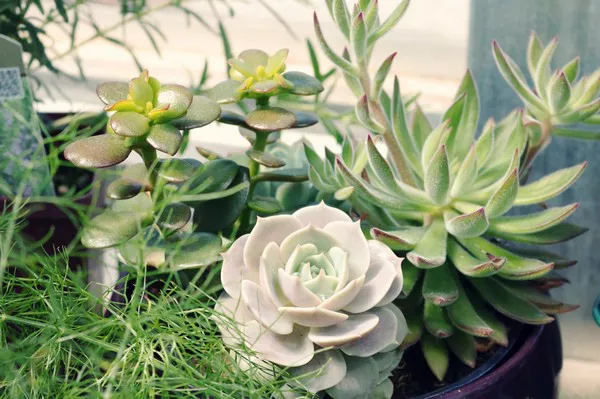Succulents, with their captivating shapes and colors, have become a popular choice for both indoor and outdoor gardening. While they thrive in well-draining soil, succulents can also adapt to unique planting environments, such as rocks and stones. Planting succulents on rocks not only showcases their beauty but also adds an element of intrigue to your garden or living space. In this step-by-step guide, we will explore the art of planting succulents on rocks and closely related topics to ensure your rock garden flourishes with these resilient and charming plants.
1. Selecting the Right Rocks
Size and Shape: Choose rocks or stones that are large enough to provide stability for your succulents but not too heavy to move easily. Irregular shapes can add visual interest and create natural pockets for planting.
Porosity: Opt for rocks with some porosity, as this allows for better water drainage and prevents water from pooling around the roots of your succulents.
Local Availability: Consider using rocks native to your region, as they can blend seamlessly with the natural landscape and require little to no maintenance.
2. Preparing the Rocks
Cleaning the Rocks: Thoroughly clean the rocks with water to remove any dirt, debris, or potential contaminants.
Sun Exposure: If your rocks have been in a shaded area, gradually expose them to sunlight to avoid shocking the succulents once planted.
3. Creating Proper Drainage
Drill Drainage Holes: If the rocks you are using are solid or have limited drainage capabilities, drill or carve small holes to allow excess water to escape.
Elevating the Rocks: Consider elevating the rocks slightly by placing them on small supports or arranging them in a way that creates gaps underneath. This helps water flow freely and prevents waterlogging.
4. Choosing the Right Succulents
Suitable Varieties: Select succulent varieties that are well-suited for rock gardens and can tolerate the specific conditions of your planting area. Some popular choices include Sedum, Sempervivum, Echeveria, and Graptopetalum.
Colors and Textures: Play with different colors and textures to create an eye-catching display. Mix rosette-shaped succulents with trailing or spiky varieties for a visually dynamic arrangement.
5. Preparing the Soil
Well-Draining Mix: Create a well-draining soil mix suitable for succulents by combining potting soil with coarse sand, perlite, or pumice. This ensures that the succulents’ roots do not sit in water for extended periods.
Minimal Soil Layer: Keep in mind that succulents have shallow root systems. Provide a thin layer of soil on the rocks, enough to anchor the plants but not too deep to retain excess moisture.
6. Planting the Succulents
Inspect the Roots: Before planting, carefully inspect the roots of your succulents. Trim any damaged or rotting roots to encourage healthy growth.
Nesting Technique: Gently nest the succulents into the soil layer, ensuring they are snugly positioned on the rocks. Avoid pressing too hard, as this can damage the roots.
Spreading and Growth Direction: Arrange the succulents in a way that allows them to spread and grow naturally. Consider their future growth direction to ensure they have ample space to thrive.
7. Caring for Your Rock Garden
Watering: Water your succulents sparingly, allowing the soil to dry out completely between waterings. Be cautious not to overwater, as this can lead to root rot.
Seasonal Considerations: Succulents may have different watering needs depending on the season. Reduce watering during winter dormancy and increase it slightly during the growing season.
Sunlight: Place your rock garden in an area with adequate sunlight, but be mindful of extreme heat, as some succulents can get sunburned.
Protect from Frost: If you live in an area with freezing temperatures, consider protecting your succulents from frost during the winter months.
8. Maintenance and Upkeep
Pruning and Grooming: Regularly remove dead leaves and spent blooms to promote healthy growth and a tidy appearance.
Propagation: Take advantage of the natural offshoots and baby plants that succulents produce. Propagate these young plants to expand your rock garden or share them with friends.
Pest Control: Keep an eye out for pests, such as mealybugs and aphids, and address infestations promptly to prevent damage to your succulents.
Conclusion
Planting succulents on rocks offers a creative and captivating way to display these marvelous plants. By selecting the right rocks, ensuring proper drainage, and choosing suitable succulent varieties, you can create a stunning rock garden that brings joy and fascination to any space. Follow the step-by-step guide outlined in this article to create a thriving rock garden that showcases the resilience and beauty of these unique plants. With the right care and maintenance, your succulents will flourish in their rocky abode, delighting you with their charm and enhancing the aesthetics of your indoor or outdoor environment.


